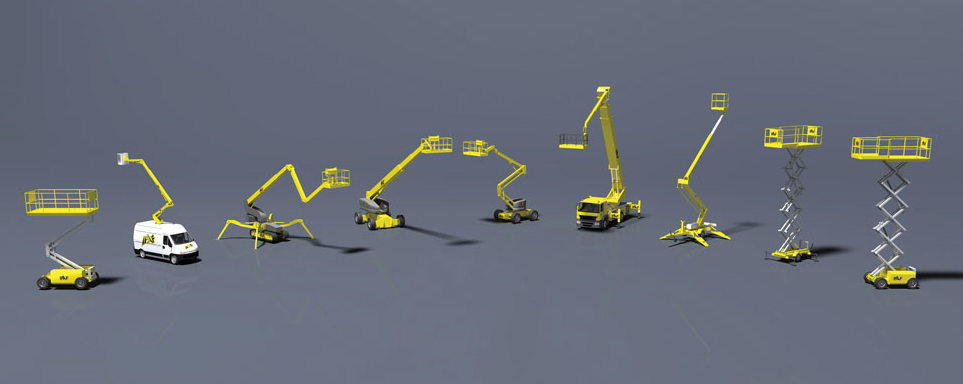រដ្ឋសម្រេចដកហូតដីព្រៃកាន់កាប់ខុសច្បាប់ជិត ៤៩០ហិកតាទៀត នៅឧទ្យានវ៉ើនសៃ-សៀមប៉ាង
នៅក្នុងវិធានការដ៏សំខាន់មួយ ដើម្បីស្តារ និងការពារធនធានធម្មជាតិ អាជ្ញាធរខេត្តស្ទឹងត្រែងបានសម្រេចធ្វើការដកហូតដីព្រៃដែលកាន់កាប់ដោយខុសច្បាប់ជិត ៤៩០ ហិកតា មានទីតាំងស្ថិតនៅក្នុងឧទ្យានជាតិវ៉ើនសៃ-សៀមប៉ាង។ ការសម្រេចនេះធ្វើឡើងក្រោមដីកាលេខ ០១៧/២៥ ដ.ក ដែលមានគោលបំណងបញ្ជាក់ឡើងវិញនូវកម្មសិទ្ធិរបស់រដ្ឋលើដីដែលរងផលប៉ះពាល់ដោយការកាន់កាប់ខុសច្បាប់ ដែលបានធ្វើការកាប់បំផ្លាញព្រៃឈើ និងការទន្ទ្រានយកដីធ្វើជាកម្មសិទ្ធិផ្ទាល់ខ្លួន។ ដីការនេះ បានប្រកាសបដិសេធ និងដកហូតដីព្រៃឈើដែលទទួលរងនូវការកាប់គាស់ រុករាន ទន្ទ្រានយកដីព្រៃរបស់រដ្ឋ ដើម្បីវាតយកដីធ្វើកម្មសិទ្ធិដោយខុសច្បាប់ លើទីតាំងដីចំនួន ០១កន្លែងដែលមានផ្ទៃដីសរុប ៤៨៧ហិកតា និងដំណាំនៅលើដីទាំងអស់ ក្នុងតំបន់ឧទ្យានជាតិវើនសៃ-សៀមប៉ាង ស្ថិតក្នុងឃុំស្ដៅ និងឃុំសាមមួយ ស្រុកសេសាន ខេត្តស្ទឹងត្រែង។ ក្នុងនោះ អាជ្ញាធរខេត្តស្ទឹងត្រែង បានទុករយៈពេល ៣០ថ្ងៃ ចាប់ពីថ្ងៃចុះហត្ថលេខាខាងលើ សម្រាប់ទុកសិទ្ធិដើម្បីធ្វើការតវ៉ាផងដែរ។ សកម្មភាពទាំងនេះគូសបញ្ជាក់ពីការប្តេជ្ញាចិត្តរបស់រដ្ឋាភិបាលក្នុងការការពារបរិស្ថាន និងធានាថាធនធានរបស់រដ្ឋត្រូវបានអភិរក្សសម្រាប់មនុស្សជំនាន់ក្រោយ។ កន្លងទៅថ្មីៗនេះដែរ អាជ្ញាធរខេត្តស្ទឹងត្រែង ក៏ធ្លាប់បានប្រកាសជាផ្លូវការនូវការដកហូតយកដីជិត ១២០ហិកតា មកវិញពីការកាន់កាប់ខុសច្បាប់ ដែលមានទីតាំងនៅក្នុងតំបន់ឧទ្យានជាតិវើនសៃ-សៀមប៉ាង ស្ថិតក្នុងឃុំតាឡាត ស្រុកសេសាន ខេត្តស្ទឹងត្រែង នេះផងដែរ។ (អានបន្ថែម) កិច្ចខិតខំប្រឹងប្រែងទាំងនេះឆ្លុះបញ្ចាំងពីការប្រឆាំងនឹងការប្រើប្រាស់ដីខុសច្បាប់នៅក្នុងតំបន់ការពារ ដោយបង្ហាញពីសារៈសំខាន់នៃការអភិរក្ស និងការគ្រប់គ្រងប្រកបដោយនិរន្តរភាពនៃបេតិកភណ្ឌធម្មជាតិរបស់កម្ពុជា។ បច្ចុប្បន្ន អាជ្ញាធរខេត្តក៏កំពុងបន្តជំរុញឱ្យប្រជាពលរដ្ឋ និងអ្នកពាក់ព័ន្ធគោរពព្រំដែនឧទ្យានជាតិ និងរួមចំណែកក្នុងការអភិរក្សជីវៈចម្រុះដ៏សម្បូរបែបក្នុងតំបន់នេះ។ - […]
ក្រុមហ៊ុនAIAI ចង់វិនិយោគលើការនាំចេញកសិផលកម្ពុជាតាមជើងយន្តហោះទៅទីផ្សារអន្តរជាតិ
គណៈប្រតិភូចិននៃក្រុមហ៊ុន Angkor International Airport Investment (Cambodia) Co.,Ltd បានបង្ហាញពីបំណងចង់វិនិយោគលើការនាំចេញកសិផលសក្តានុពលរបស់កម្ពុជាតាមជើងយន្តហោះទៅកាន់ទីផ្សារប្រទេសចិន និងទីផ្សារអន្តរជាតិនាពេលខាងមុខ។ ការបង្ហាញពីបំណងនេះ ត្រូវបានធ្វើឡើងនៅក្នុងជំនួបពិភាក្សារវាងឯកឧត្តមរដ្ឋមន្ត្រី ឌិត ទីណា ជាមួយលោក Lu Wei ប្រធានក្រុមហ៊ុន Angkor International Airport Investment (Cambodia) Co.,Ltd នៅថ្ងៃទី៧ ខែមេសា ឆ្នាំ២០២៥។ នាឱកាសនោះ តំណាងប្រតិភូចិន បានបង្ហាញបំណងចង់នាំចេញកសិផលសក្តានុពលកម្ពុជាទៅកាន់ទីផ្សារប្រទេសចិន និងទីផ្សារអន្តរជាតិតាមជើងយន្តហោះ និងពិនិត្យស្នើសុំគោលការណ៍ណែនាំក្នុងវិស័យកសិកម្មកម្ពុជាផងដែរ។ ជាការឆ្លើយតប ឯកឧត្តម ឌិត ទីណា បានស្វាគមន៍ និងណែនាំឱ្យគណៈប្រតិភូចិន បង្កើនការផ្សព្វផ្សាយនិងស្វែងរកទីផ្សារសម្រាប់កសិផលកម្ពុជាជាមុន ដោយផ្ដោតសំខាន់លើផលិតផលប្រណីត មានគុណភាពល្អ អាចលក់ចេញក្នុងតម្លៃខ្ពស់ ដើម្បីផ្ដល់ផលចំណេញដល់កសិករ និងក្រុមហ៊ុន។ គួរបញ្ជាក់ថា សម្រាប់ឆ្នាំ២០២៤ កម្ពុជារកចំណូលបាន ៥,២ពាន់លានដុល្លារ ពីការនាំចេញផលិតផលកសិកម្មជិត១២លានតោន នៃផលិតផលកសិកម្មសរុបប្រមាណ ៤០លានតោន។ (អានបន្ថែម) ភាពជាដៃគូថ្មីនេះជាមួយ AIAI អាចត្រួសត្រាយផ្លូវសម្រាប់កំណើន និងឱកាសកាន់តែច្រើននៅក្នុងវិស័យកសិកម្ម។ […]
៤ខែប៉ុណ្ណោះ កម្ពុជារកចំណូលបានជាង $២៣លាន ពីការលក់សំបុត្រទេសចរណ៍
ក្នុងរយៈពេល៤ខែ គិតចាប់ពីខែមករា ដល់ខែមេសា ឆ្នាំ២០២៥នេះ កម្ពុជារកចំណូលបាន ២៣.១៥៤.៥៣២ដុល្លារ ពីការលក់សំបុត្រចូលទស្សនារមណីយដ្ឋានល្បីៗដូចជា ប្រាសាទអង្គរ, ប្រាសាទកោះកែរ, ប្រាសាទបេងមាលា, ភ្នំក្បាលស្ពាន និងការជិះទូកកម្សាន្ត។ នេះបើយោងតាមរបាយការណ៍ចេញផ្សាយដោយគ្រឹះស្ថានអង្គរនៅថ្ងៃទី០១ ខែឧសភា ឆ្នាំ២០២៥។ របាយការណ៍ខាងលើបានឱ្យដឹងថា ក្នុងរយៈពេល ៤ខែដើមឆ្នាំ២០២៥នេះ កម្ពុជាទទួលបានភ្ញៀវទេសចរបរទេសចំនួន ៤៧៤.៨១០នាក់ ដែលបានទិញបណ្ណចូលទស្សនារមណីយដ្ឋានអង្គរ បើគិតជាទឹកប្រាក់មានចំនួនសរុប ២២.២០៨.៨១០ដុល្លារ កើន ១១,៥០% ធៀបនឹងរយៈពេលដូចគ្នាកាលពីឆ្នាំ២០២៤។ ក្រៅពីចំណូលបានពីការលក់សំបុត្រចូលទស្សនារមណីយដ្ឋានអង្គរ គ្រឹះស្ថានអង្គរបានរកចំណូលបន្ថែមពីការលក់សំបុត្រចូលទស្សនារមណីយដ្ឋានផ្សេងៗទៀត រួមមាន៖ ប្រាសាទកោះកែរ, ប្រាសាទបេងមាលា, ភ្នំក្បាលស្ពាន និងការជិះទូក បើគិតជាទឹកប្រាក់សរុបបានចំនួន ៩៤៥.៧២២ដុល្លារ។ ដើម្បីបង្កើនបទពិសោធន៍ដល់ភ្ញៀវអន្តរជាតិ ទាំងរដ្ឋាភិបាលកម្ពុជា និងមូលនិធិអង្គរ បានអនុវត្តគំនិតផ្តួចផ្តើមជាយុទ្ធសាស្ត្រ សំដៅលើកកម្ពស់វិស័យទេសចរណ៍។ ផែនការទាំងនេះផ្តោតលើការទាក់ទាញអ្នកធ្វើដំណើរមកពីជុំវិញពិភពលោក ដោយសង្កត់ធ្ងន់លើបេតិកភណ្ឌវប្បធម៌ដ៏សម្បូរបែបរបស់ប្រទេសកម្ពុជា និងទេសភាពធម្មជាតិដ៏គួរឱ្យភ្ញាក់ផ្អើល។(អានបន្ថែម, បន្ថែម និងបន្ថែម) នៅពេលដែលឧស្សាហកម្មទេសចរណ៍បន្តងើបឡើងវិញ ប្រទេសកម្ពុជានៅតែខិតខំប្រឹងប្រែងក្នុងការផ្តល់នូវបទពិសោធន៍ដែលមិនអាចបំភ្លេចបាន ដែលបង្ហាញពីប្រវត្តិសាស្រ្តតែមួយគត់ និងទេសភាពដ៏អស្ចារ្យរបស់ខ្លួន។ ជាមួយនឹងកិច្ចខិតខំប្រឹងប្រែងជាបន្តបន្ទាប់ក្នុងការជំរុញទេសចរណ៍ អនាគតមើលទៅភ្លឺស្វាងសម្រាប់ការផ្តល់ជូនវប្បធម៌ដ៏រស់រវើករបស់ព្រះរាជាណាចក្រកម្ពុជា។ - Video Advertisement -
វៀតណាមចង់ពង្រីកការវិនិយោគថាមពលស្អាត និងបង្កើតតំបន់កសិ-ឧស្សាហកម្មនៅកម្ពុជា
នៅក្នុងកិច្ចប្រជុំនាពេលថ្មីៗនេះ នៅថ្ងៃទី៣ ខែមេសា ឆ្នាំ២០២៥ តំណាងមកពីសមាគមឧស្សាហកម្មកៅស៊ូវៀតណាមបានបង្ហាញពីមហិច្ឆតារបស់ពួកគេក្នុងការបង្កើនការវិនិយោគថាមពលស្អាត និងស្វែងយល់បន្ថែមពីការបង្កើតតំបន់កសិឧស្សាហកម្មនៅកម្ពុជា។ កិច្ចពិភាក្សាដ៏សំខាន់នេះត្រូវបានធ្វើឡើងរវាង ឯកឧត្តម ជា វុទ្ធី អគ្គលេខាធិការនៃគណៈកម្មាធិការវិនិយោគកម្ពុជា និងលោក Truong Minh Trung អគ្គនាយករងទី១ នៃក្រុមហ៊ុនកៅស៊ូវៀតណាម និងជាប្រធានគណៈកម្មាធិការអភិវឌ្ឍន៍កៅស៊ូ ១០ម៉ឺនហិកតា នៅកម្ពុជា។ ក្នុងជំនួបនោះ អគ្គលេខាធិការ លោក ជា វុទ្ធី បានលើកទឹកចិត្តសមាគមឧស្សាហកម្មកៅស៊ូវៀតណាម ឱ្យពិចារណាធ្វើការវិនិយោគបង្កើតតំបន់កសិឧស្សាហកម្ម ដែលនឹងបម្រើជាមជ្ឈមណ្ឌលសម្រាប់ក្រុមហ៊ុនពាក់ព័ន្ធនឹងការកែច្នៃកៅស៊ូ ដើមកៅស៊ូ និងកសិផលផ្សេងៗទៀត។ គំនិតផ្តួចផ្តើមនេះ មានគោលបំណងគាំទ្រដល់ឧស្សាហកម្មក្នុងស្រុកដែលកំពុងប្រឈមនឹងតម្រូវការដែលកំពុងកើនឡើងយ៉ាងឆាប់រហ័សពីមួយថ្ងៃទៅមួយថ្ងៃ។ ឆ្លើយតបជាវិជ្ជមាន លោក Truong Minh Trung បានទទួលយកសំណើនេះ ហើយបានបង្ហាញនូវចំណាប់អារម្មណ៍យ៉ាងខ្លាំងក្នុងការពង្រីកការវិនិយោគរបស់គាត់បន្ថែមទៀតនៅក្នុងវិស័យថាមពលស្អាតនៅក្នុងប្រទេសកម្ពុជា។ លោកក៏បានស្នើសុំការគាំទ្រពីក្រុមប្រឹក្សាអភិវឌ្ឍន៍កម្ពុជា ដើម្បីសម្រួលដល់គំនិតផ្តួចផ្តើមទាំងនេះ។ ដើម្បីបង្ហាញពីការប្តេជ្ញាចិត្ត អគ្គលេខាធិការ លោក ជា វុទ្ធី បានធានាចំពោះលោក Trung អំពីការគាំទ្រជាបន្តបន្ទាប់របស់រដ្ឋាភិបាលកម្ពុជា សម្រាប់ការពង្រីកការវិនិយោគរបស់វៀតណាម ជាពិសេសលើវិស័យថាមពលស្អាត។ លោកបានលើកឡើងពីសារៈសំខាន់នៃការរក្សាទំនាក់ទំនងវិនិយោគទ្វេភាគី និងបានរំលឹកឡើងវិញនូវក្តីសង្ឃឹមក្នុងការទាក់ទាញការវិនិយោគរបស់វៀតណាមមកកម្ពុជាបន្ថែមទៀត។ កិច្ចសហប្រតិបត្តិការនេះធ្វើឡើងចំពេលដែលកម្ពុជា និងវៀតណាមមានបំណងជំរុញពាណិជ្ជកម្មទ្វេភាគីឱ្យកើនដល់ […]
គម្រោងកែលម្អគុណភាពផ្លូវដែកភ្នំពេញ-ប៉ោយប៉ែត ក្រោមជំនួយជប៉ុន $៣០០លាន កំពុងស្ថិតក្នុងការសិក្សា
ក្រសួងសាធារណការ និងដឹកជញ្ជូន (MPWT) សហការជាមួយវិស័យឯកជន (CRBC និង Royal Railway) កំពុងជំរុញផែនការកែលម្អផ្លូវរថភ្លើងភ្នំពេញ-ប៉ោយប៉ែត ដោយមានការគាំទ្រយ៉ាងច្រើនពីជំនួយឥតសំណង ៣០០លានដុល្លារ ពីរដ្ឋាភិបាលជប៉ុន។ គំនិតផ្តួចផ្តើមនេះមានគោលបំណងលើកកម្ពស់ផ្លូវដែកភាគខាងជើងដែលមានស្រាប់ ដែលមានប្រវែង ៣៨៦គីឡូម៉ែត្រ ឱ្យមានល្បឿន និងសមត្ថភាពដូចទៅនឹងផ្លូវរថភ្លើងភាគខាងត្បូងដែលតភ្ជាប់ពីភ្នំពេញទៅខេត្តព្រះសីហនុ។ យោងតាមរបាយការណ៍របស់ក្រសួងសាធារណការ និងដឹកជញ្ជូន បានបង្ហាញថា គម្រោងលើកកម្រិតគុណភាពផ្លូវដែកនេះ នឹងត្រូវធ្វើការកែលម្អលើចំណុចសំខាន់ៗមួយចំនួន រួមមានៈការផ្លាស់ប្តូរកំណល់ពីដែកទៅបេតុង ការផ្លាស់ប្តូរដែករ៉ៃពីប្រភេទតូចទៅធំ ការរៀបចំនូវគ្រឹះផ្លូវដែក ស្ពាននិងអគារ ឧបករណ៍ផ្តល់សញ្ញានិងព័ត៌មាន ព្រមទាំងឋបនីយភណ្ឌផ្លូវដែក ដោះស្រាយបញ្ហាក្នុងស្ថានីយរថភ្លើង ខ្សែរថភ្លើង ការជួសជុលស្ថានីយចំណត កែលម្អចំណតរង់ចាំអ្នកដំណើរ និងអ្នកដំណើរចេញចូលស្ថានីយ ប្រព័ន្ធព័តមានទំនាក់ទំនងជាមធ្យោយបាយដឹកជញ្ជូនផ្សេងទៀត និងរៀបចំការដឹកជញ្ជូនអ្នកដំណើរ និងទំនិញប្រកបដោយប្រសិទ្ធភាព។ លើសពីនេះទៀតនោះ ហេដ្ឋារចនាសម្ព័ន្ធផ្លូវដែកដែលបានធ្វើឱ្យប្រសើរឡើងនឹងជួយសម្រួលដល់ការបង្កើនល្បឿនរថភ្លើង – រហូតដល់ ៨០គីឡូម៉ែត្រក្នុងមួយម៉ោងសម្រាប់រថភ្លើងដឹកអ្នកដំណើរ និង ៥០គីឡូម៉ែត្រក្នុងមួយម៉ោងសម្រាប់រថភ្លើងដឹកទំនិញ – ខណៈពេលដែលធានាសុវត្ថិភាពសម្រាប់អ្នកប្រើប្រាស់ទាំងអស់ផងដែរ។ គួរបញ្ជាក់ថា ផ្លូវរថភ្លើងមួយខ្សែនេះ នឹងត្រូវរត់ឆ្លងកាត់ខេត្ត-ក្រុងចំនួនប្រាំមួយគឺ ភ្នំពេញ កំពង់ឆ្នាំង ពោធិសាត់ បាត់ដំបង បន្ទាយមានជ័យ និងប៉ោយប៉ែត ដែលធ្វើឱ្យវាក្លាយជាការតភ្ជាប់ដ៏សំខាន់សម្រាប់ការដឹកជញ្ជូនអ្នកដំណើរ […]
ក្រុមហ៊ុនបច្ចេកវិទ្យាឈានមុខគេមកពីតៃវ៉ាន់ ចង់មកវិនិយោគលើវិស័យ១នេះនៅកម្ពុជា
នៅក្នុងការអភិវឌ្ឍន៍ដ៏សំខាន់មួយសម្រាប់ទិដ្ឋភាពបច្ចេកវិទ្យារបស់ប្រទេសកម្ពុជា ក្រុមហ៊ុន ADATA Technology Co., Ltd. ដែលជាក្រុមហ៊ុនបច្ចេកវិទ្យាឈានមុខគេរបស់តៃវ៉ាន់បានបង្ហាញពីចំណាប់អារម្មណ៍របស់ខ្លួនជាផ្លូវការក្នុងការវិនិយោគលើវិស័យបច្ចេកវិទ្យាទំនើបនៅកម្ពុជា។ ការប្រកាសនេះធ្វើឡើងក្នុងជំនួបរវាងលោក ហ៊ុន ម៉ាណែត នាយករដ្ឋមន្ត្រីកម្ពុជា និងលោក CHEN Simon ប្រធាន ADATA ដែលប្រព្រឹត្តទៅនៅថ្ងៃទី៣០ ខែមេសា ឆ្នាំ២០២៥។ ក្នុងកិច្ចពិភាក្សារបស់ពួកគេ លោក CHEN Simon បានលើកឡើងពីកិច្ចខិតខំប្រឹងប្រែងរបស់ក្រុមហ៊ុន មិនត្រឹមតែការវិនិយោគប៉ុណ្ណោះទេ ប៉ុន្តែថែមទាំងចង់សហការជាមួយក្រសួង ស្ថាប័ននានារបស់កម្ពុជា ដើម្បីបង្កើនការបណ្តុះបណ្តាល និងការអភិវឌ្ឍធនធានមនុស្សក្នុងវិស័យបច្ចេកវិទ្យាទំនើបថែមទៀតផង។ ការផ្តោតជាយុទ្ធសាស្ត្រនេះ មានគោលបំណងចង់លើកកម្ពស់សមត្ថភាពរបស់កម្ពុជាក្នុងវិស័យបច្ចេកវិទ្យានាយុគសម័យថ្មីនេះ។ ជាការឆ្លើយតប សម្តេចធិបតី បានស្វាគមន៍ ក្រុមហ៊ុនដែលចាប់អារម្មណ៍វិនិយោគនៅកម្ពុជា ខណៈសម្តេចថា ការអភិវឌ្ឍវិស័យបច្ចេកវិទ្យានៅកម្ពុជា គឺជាវិស័យអាទិភាពមួយរបស់រាជរដ្ឋាភិបាល។ ទន្ទឹមគ្នានេះដែរ សម្តេច ក៏បានលើកទឹកចិត្តឱ្យក្រុមហ៊ុនបន្តភ្ជាប់ទំនាក់ទំនងជាមួយក្រសួងពាក់ព័ន្ធបន្ថែមទៀត ដើម្បីចាប់យកឱកាសវិនិយោគនៅកម្ពុជា។ គួររម្លឹកថា កាលថ្ងៃទី១៤ ខែធ្នូ ឆ្នាំ២០២៣ ក្រុមហ៊ុនរបស់តៃវ៉ាន់ ADATA Technology Co., Ltd ធ្លាប់បានប្រកាសពីគម្រោងវិនិយោគរបស់ខ្លួនម្តងរួមមកហើយ ដែលគម្រោងនោះមានតម្លៃដល់ជាង ១០០លានដុល្លារ ក្នុងការសាងសង់រោងចក្រសម្រាប់ផលិតផលអេឡិចត្រូនិកជាច្រើនប្រភេទនៅប្រទេសកម្ពុជា។ […]



 English
English







